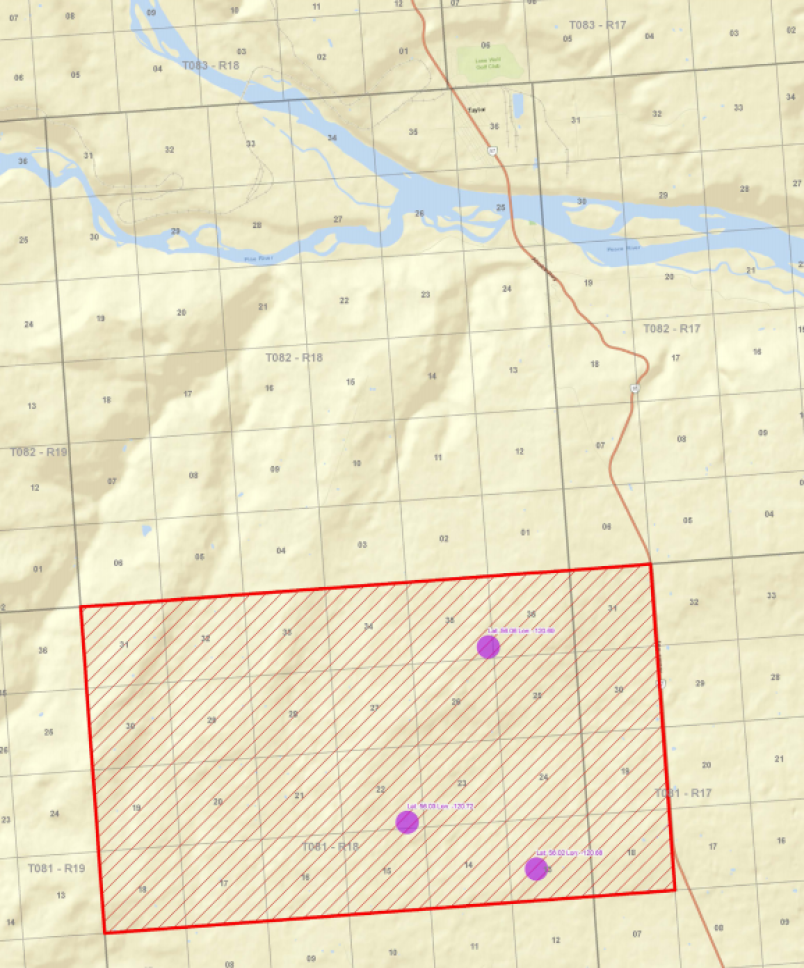Drilling activity has been suspended for at least 30 days in the Septimus area southeast of Fort St. John as the BC Oil and Gas Commission continues to investigate a series of earthquakes that rattled the region last week.
In an update issued Friday, the Commission said it narrowed down the location of the three earthquakes, which measured between magnitude 3.3 to 4.5 on November 29, to an area near Canadian Natural Resources hydraulic fracturing operations.
The Calgary-based company was the only operator working in the area at the time and it immediately suspended operations, said Commission spokeswoman Lannea Parfitt, adding the company has shut down its two wells there.
"We don't want to speculate as we are continuing to investigate," she said when asked what the commission will do if fracking is found to have caused the earthquakes.
CNRL operations remain suspended in the area until the company receives written consent to continue from the Commission.
The Commission also met with other companies operating near the earthquakes on Dec. 4, and there will be no hydraulic fracturing in the area for the next 30 days as the investigation continues. Companies will need to confirm with the Comission when their operations can continue.
CNRL officials say the earthquakes were detected by its monitoring equipment in the Septimus area.
"With the safety of our workers and the public as our first priority, we immediately responded by shutting down our activities in the area, as per OGC protocols and Canadian Natural’s operating practices," spokesperson Julie Woo said in an email.
"It is too early to determine whether the seismic activity detected and felt in the region was a natural occurrence or related to any of our activities."
The company is working with the OGC to provide all available data and information as part of the Commission's investigation, Woo said.
The first earthquake was reported at around 6:25 p.m. on November 29 at a magnitude 4.5. A 3.3-magnitude aftershock was recorded at 7:06 p.m., and a second aftershock near magnitude 4 was recorded at 7:15.
Residents across Northeast B.C. reported feeling loud, strong tremors that shook houses for several seconds in Fort St. John, Charlie Lake, Taylor, Chetwynd, Dawson Creek, Hudson's Hope, and rural communities in between. Some felt tremors as far away as Pouce Coupe and Baytree, Alberta.
The Commission has stepped up its research and monitoring of induced earthquakes linked to industry in Northeast B.C., adding 20 new seismic monitoring stations in recent years.
Most "induced seismicity" events happen when fluid is injected into underground faults at high pressures to release gas as part of drilling operations, or from wastewater disposal.
According to the Commission, a magnitude 4.5 earthquake is often felt on the surface but rarely causes damage, and less than 0.2% of hydraulic fracturing operations cause felt events. There were no reports of damage or injuries from last week's events, though hundreds of felt reports were submitted to Earthquakes Canada.
Permit conditions require seismic monitoring during hydraulic fracturing activities. Earlier this year, the Commission issued an order requiring drillers to shut down operations when an induced earthquake reaches magnitude 3.0 or greater near Fort St. John or Dawson Creek.
Geoff Morrison, B.C. manager of the Canadian Association of Petroleum Producers, said safe and sustainable natural gas development is a priority for operators in Northeast B.C.
"Natural gas activity is strictly regulated and monitored, and the safety of communities located near operations is of paramount importance. We have a track record of robust regulations, employing best industry operating practices, and working to continuously improve our environmental performance," Morrison said in a statement.
The industry will continue to work closely with the Commission as it conducts its investigation, he added.
— with files from the Canadian Press



